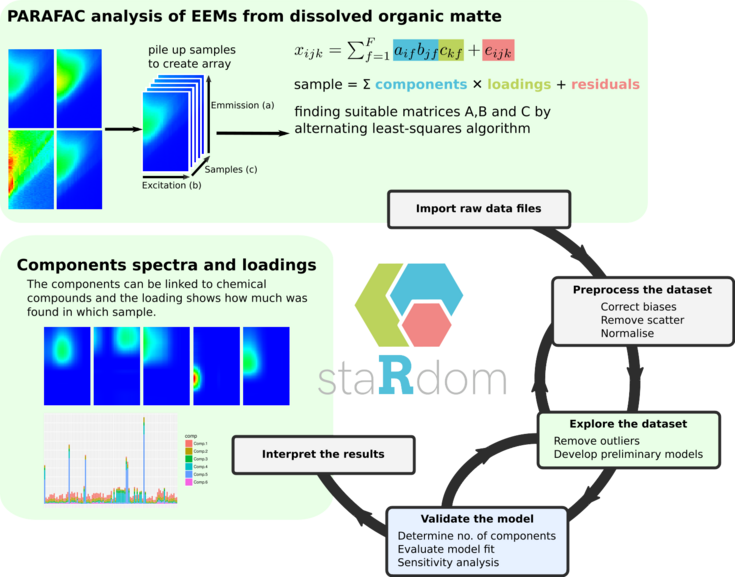Organic carbon cycling in streams: process understanding and impacts of agriculture and droughts
SUPERVISOR: Thomas HEIN
PROJECT ASSIGNED TO: Matthias PUCHER
The most dynamic part of the carbon cycle in aquatic ecosystems is the microbial turnover of dissolved organic matter (DOM). The related processes are responsible for DOM degradation, its transport to downstream waterbodies, greenhouse gas production and the composition of the microbial community. Global change has several impacts on the DOM quantity and quality transported to streams and the retention capacity of stream ecosystems through the alteration of DOM sources and hydrology. Specifically, this thesis addresses differences in the retention of DOM from different sources and the effects of droughts on hyporheic microbial processes.
Two DOM and nutrient addition experiments, in a stream and in the laboratory, provided the necessary data to derive the results and draw the conclusions of this thesis. One focused on the uptake of DOM from five different natural leachate sources. The results allowed to quantify a range of uptake velocities for the different leachates, which differed by approximately one order of magnitude. Bulk dissolved organic carbon (DOC) showed variable uptake velocities, probably due to the lack of quality-related information and a lower accuracy of the lab instrument. The DOM quality was determined from fluorescence measurements followed by a parallel factor (PARAFAC) analysis. The uptake processes of the DOM components could be quantified with a higher certainty and allowed a more specific interpretation, especially when interactions both between and within DOM components and nutrients were included in the analysis.
The other experiment showed the influence of a dry-out phase on DOM retention and release in hyporheic sediments in a temperate-region scenario. The initial release peak during rewetting was quantified. The hyporheic microbial communities recovered mostly within 14 days, but no difference in the reactions of microbes from perennial and intermittent streams could be identified. In comparison to other studies, the microbes from temperate-region streams were not as severely impacted by the dry-out as has been shown before for Mediterranean streams. The remaining water content might be key to that resistance.
This thesis advances the current knowledge about DOM turnover in streams by (1) identifying interactions between different DOM components during in-stream retention and (2) demonstrating a quick recovery of microbial communities from temperate streams after a dry-out phase. The thesis also contributed to the advancement of analytical tools in DOM analysis. In specific, the scientific community was provided with (3) a tool for a PARAFAC analysis of EEM data in a complete open source environment (staRdom package for R) and (4) an approach to analyse interactions in uptake and retention for many kinds of solutes in streams (INSBIRE).

